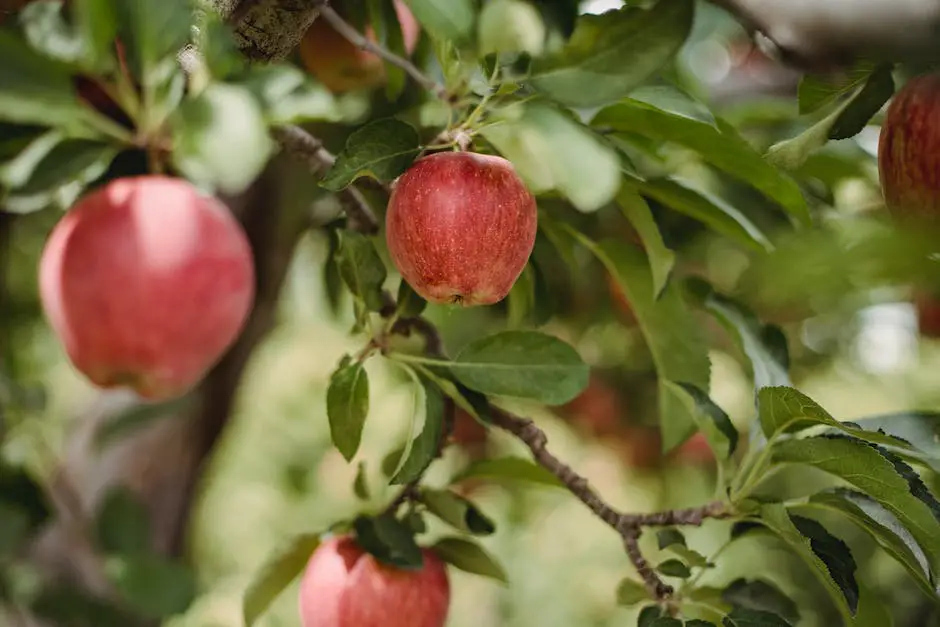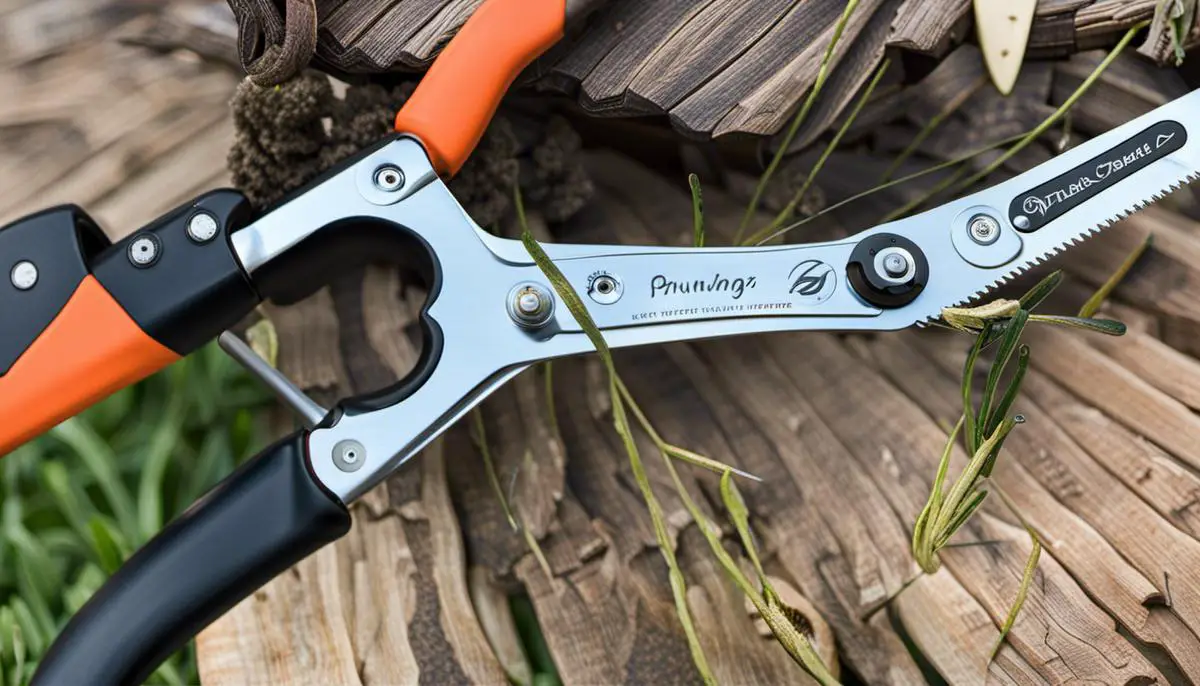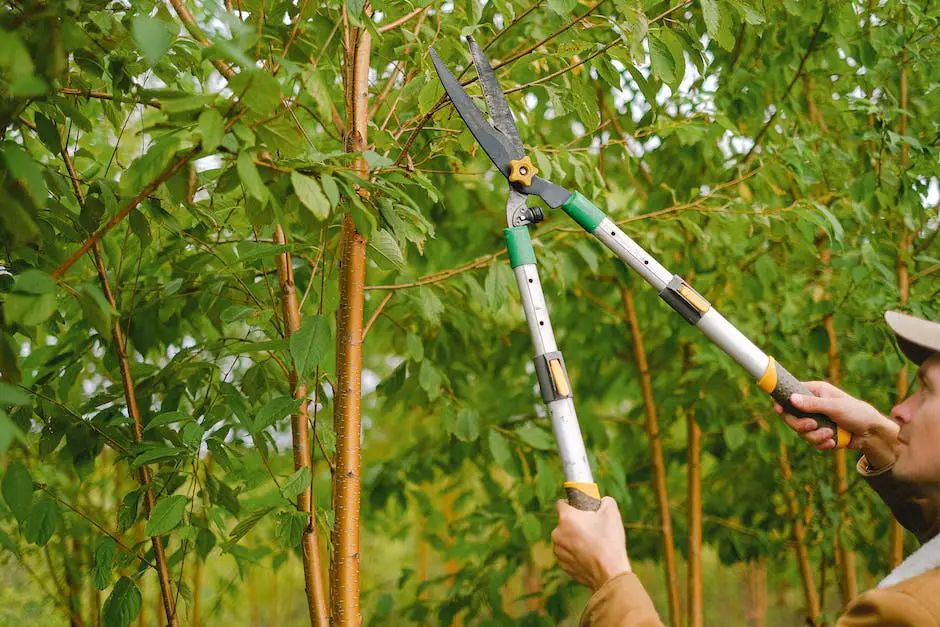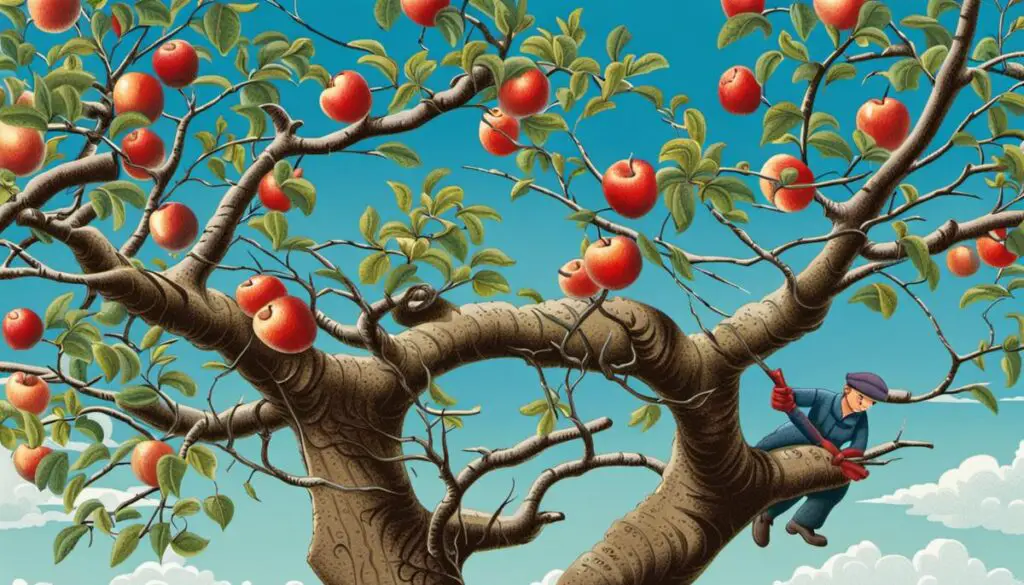Recognizing the impactful role of pruning in the healthy cultivation and bountiful yield of apple trees is essential. Particularly, learning the art and science of pruning a young apple tree can set you up to reap abundant rewards in harvest time, while ensuring your beautiful tree stays healthy and well-shaped. This process will set you on a journey to explore the basic principles of pruning, distinguish beneficial parts of the tree that need to be pruned, understand the right techniques to apply, and realize the importance of aftercare once the pruning is done. Careful execution of these principles will ensure that your apple tree not only bears impressive fruit but also enhances the aesthetic appeal of your garden.
Understanding Pruning Basics
Understanding Pruning Basics
Pruning involves selectively removing certain parts of an apple tree, such as branches, buds, or roots, that are not contributing to the tree’s overall health or productivity. This process can assist in promoting new growth, reduce the chances for disease to spread, and generally lead to a healthier, stronger tree over time.
The goal of pruning a young apple tree is to create a strong structure where the tree will be able to support a heavy fruit load, and also provide good air circulation and light penetration. This will allow the tree to produce higher quality apples, in a larger quantity.
What to Prune
In the first year of an apple tree’s life, pruning is generally aimed at encouraging a good foundation. The bulk of your cuts should be aimed at establishing 3-5 strong branches (the scaffold branches) that are evenly spaced around the tree.
When to Prune
The best time to prune an apple tree is late winter or early spring, before the new growth starts but when the threat of severe cold has passed. This means, ideally, you should be pruning in late February to early April, depending on your specific regional climate.
How to Prune
Start by removing any branches that are diseased, dead, or damaged. Make sure you cut all the way back to a main stem or branch—not just to ground level. Second, make thinning cuts to remove excess branches. This will allow light and air to better penetrate the tree, which can encourage healthier growth and help prevent diseases.
Proper Pruning Techniques
When making cuts, never tear a branch away from a tree; use a sharp, clean pair of pruning shears or a saw to make clean cuts. Leave a small amount of space between the main branch and the cut branch. This is called a “collar” and leaving it intact helps the tree heal from the cut. When cutting a branch, do not leave a stub. This can cause future problems, including the possibility of disease.
Pruning young apple trees might seem intimidating at first but with practice, patience, and understanding, the process becomes straightforward. Not pruning your trees, or doing it incorrectly, can lead to less fruit production or disease. So, take your time, learn the process, and your apple tree will thank you in fruitful abundance.

Identifying Which Parts to Prune
Identifying Growth and Fruiting Buds
The first step in pruning a young apple tree is learning how to identify the growth and fruiting buds. Growth buds are usually single, small, and pointed. They are found along the branch and will develop into shoots, contributing to the tree’s growth structure. On the other hand, fruiting buds are typically larger, round, and usually found in groups of three. These will develop into flowers and, subsequently, apples.
Differentiating Between Vertical and Horizontal Branches
The next step is to differentiate between the vertical and horizontal branches. Vertical branches or water sprouts shoot straight up from the tree and likely won’t produce any fruit. Meanwhile, horizontal branches, which tend to grow at wider angles from the trunk, are the more productive parts of your apple tree.
Checking for Signs of Disease or Damage
Keep an eye out for branches with signs of disease or damage, as these need to be pruned to maintain the health of the tree. Any branch with a significant amount of dead wood, areas of rot, or disease symptoms such as discoloration or unusual growths should be pruned off. Similarly, any branches that cross over or rub against each other should also be pruned because they could damage the bark and expose the tree to infections.
Analyzing Tree Structure
Understanding the desirable structure of your growing apple tree will greatly influence your pruning decisions. A well-shaped young apple tree should have a central leader (main vertical stem), a few tiers of lateral branches, and the space in between major branches. This open structure lets light and air to flow, which is essential for the prevention of diseases and the production of good quality apples. Prune any extra growth that interferes with this desired structure.
Identifying the Best Time to Prune
For best results, try to prune your young apple tree late in winter or in very early spring, before new growth starts but after the coldest part of winter has passed. This timing reduces the risk of disease transmission, yet the lack of foliage at this time makes branch structure more visible leading to more efficient pruning.

Mastering Pruning Techniques
Essential Tools for Pruning Young Apple Trees
Before you begin pruning, it’s important to have the right tools. Bypass pruners are essential: they make clean, sharp cuts that will heal quickly and reduce the chance of disease. For branches larger than about a half-inch in diameter, a pruning saw is a more effective tool. Use a pair of pole pruners or a pole saw for those high, hard-to-reach branches. Always keep your tools clean, sharp, and in good repair to ensure the best results.
Timing Your Pruning: When to Prune Young Apple Trees
The best time to prune your apple trees is late winter or early spring, before new growth begins but after the worst cold weather has passed. During this dormant period, the tree is less likely to suffer stress from pruning. Additionally, dormant pruning allows the tree to direct all its energy into new growth in the spring. Avoid pruning in wet weather, which can spread disease.
Effective Pruning Techniques
Start your pruning process by removing any broken, dead, or disease-ridden branches. When cutting, always make your cut at a 45-degree angle, sliced downwards and away from the tree, to encourage water drainage and prevent disease.
Next, target inward-growing branches or any that cross or rub against each other. These types of growth can cause structural problems for the tree and reduce fruit yield. To maintain air circulation and sunlight penetration, thin some of the tree’s inside branches.
When shaping the tree, maintain a central leader: This should be the highest point of the tree, with branches radiating out and slightly downwards. This pattern allows for maximum sunlight and promotes healthy growth.
Managing Diseases Resulting from Improper Pruning
When pruning is done improperly, the tree can become susceptible to various diseases. Bacterial fire blight, apple scab, and black rot are a few potential threats. If you notice discolored, oozing, or canker-ridden branches, discard them far from your garden to prevent disease spread, and sterilize your shears between each cut. Consider spraying a protective copper-based fungicide in early spring to further guard against these diseases.
By regularly and correctly pruning your young apple trees, you can keep them healthy and bountiful for years to come. Remember that patience and a gentle touch are essential – in due time, you’ll be rewarded with a thriving tree.

Post Pruning Care
Post-Pruning Care
Once your young apple tree has been pruned, the first step in aftercare is protecting the pruned areas. This is done by applying a wound dressing or tree sealant, which are commercially available at most gardening stores. Be meticulous and make sure to coat all the cut or trimmed surfaces, as this helps prevent infections or pest infestations.
Proper Nutrition for Healing
Next, providing the right nutrients to the tree is crucial. After pruning, the tree needs extra nourishment to heal and grow. This can be done by amending the soil around the tree with a slow-release, balanced fertilizer. A fertilizer with an N-P-K ratio of 10-10-10 is typically suggested because it provides an equal measure of the three macros – Nitrogen (N), Phosphorus (P), and Potassium (K). Always follow the manufacturer’s instructions when applying fertilizer, to avoid overfeeding which can endanger the tree.
Adequate Hydration
Watering adequately is also an essential part of aftercare. Apple trees need consistent moisture to thrive, especially after pruning. Therefore, maintaining a deep watering schedule is recommended. Deep watering involves allowing the water to reach up to six inches below the soil surface, which encourages the roots to grow deeper and become more resilient.
Maintaining a Suitable Environment
Lastly, maintain a suitable environment for growth. Provide the apple tree with full sunlight exposure, as they need a minimum of six hours of direct sunlight per day. Additionally, ensure that the tree is planted at a proper distance from other trees or structures to allow sufficient airflow, which helps it dry out from dew or rain and minimizes the growth of harmful fungi or bacteria.
Regularly inspect the tree for signs of disease or insects and take action promptly, if required. Remember, healthy growth is nurtured by a clean and stress-free environment. By providing the right care after pruning, your young apple tree will thrive and reward you with a healthy crop of delicious fruit.

The practice of pruning is not merely a random act of cutting branches, it serves as a crucial aspect of maintaining the vitality of young apple trees, maximising fruit production and shaping the overall aesthetics of the tree. The benefit of implementing the correct pruning techniques and aftercare methods will be reflected in your harvest and the continuing health of your apple tree. This process is an act of stewardship, a connection with nature wherein you assist in the growth and development of the tree for mutual benefit. Applying these guidelines, nurturing patience and care, will not only allow you to skillfully prune young apple trees, but also to appreciate their blossoming into healthy, plentiful bearers of delicious fruits in the seasons to come.
